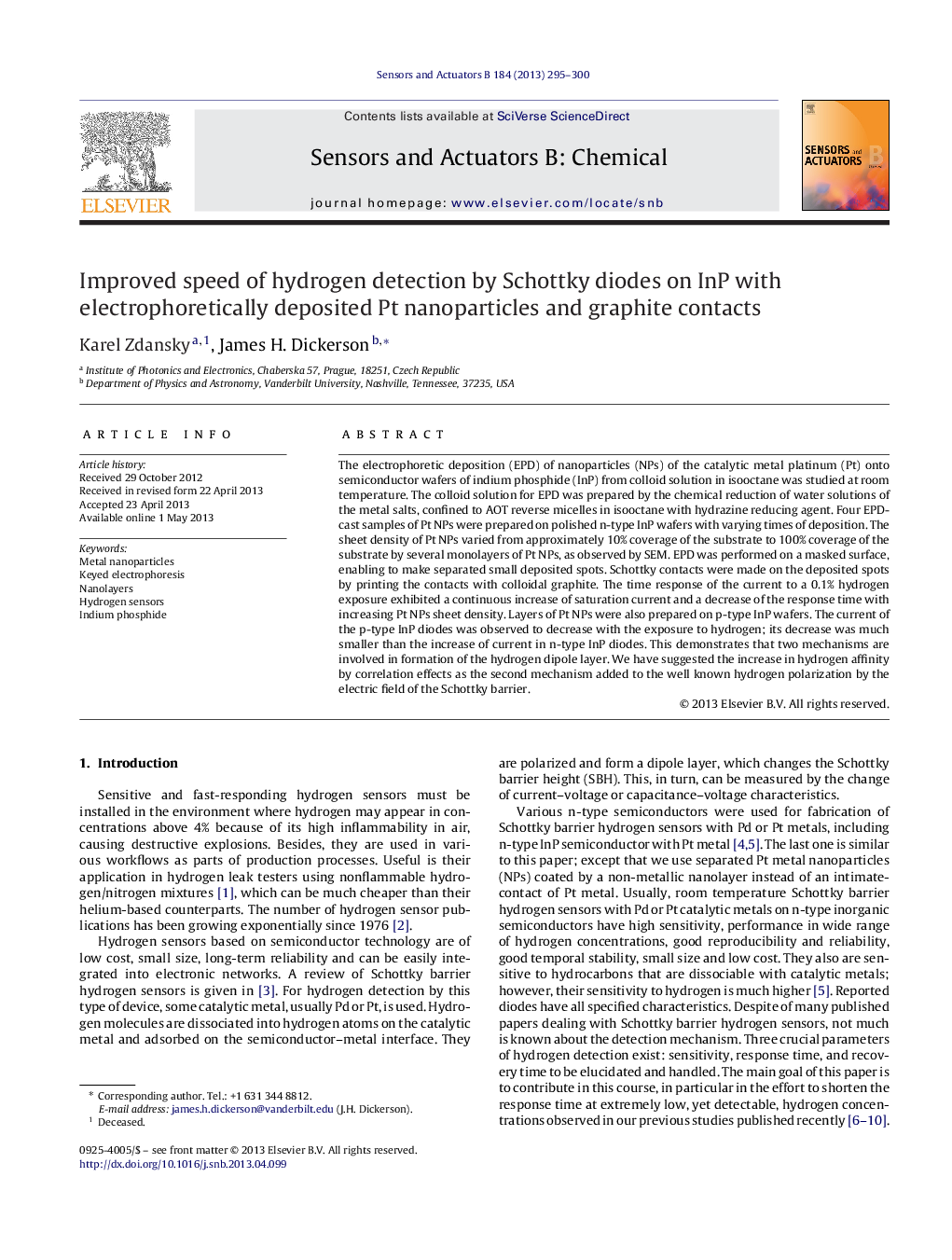| Article ID | Journal | Published Year | Pages | File Type |
|---|---|---|---|---|
| 745044 | Sensors and Actuators B: Chemical | 2013 | 6 Pages |
The electrophoretic deposition (EPD) of nanoparticles (NPs) of the catalytic metal platinum (Pt) onto semiconductor wafers of indium phosphide (InP) from colloid solution in isooctane was studied at room temperature. The colloid solution for EPD was prepared by the chemical reduction of water solutions of the metal salts, confined to AOT reverse micelles in isooctane with hydrazine reducing agent. Four EPD-cast samples of Pt NPs were prepared on polished n-type InP wafers with varying times of deposition. The sheet density of Pt NPs varied from approximately 10% coverage of the substrate to 100% coverage of the substrate by several monolayers of Pt NPs, as observed by SEM. EPD was performed on a masked surface, enabling to make separated small deposited spots. Schottky contacts were made on the deposited spots by printing the contacts with colloidal graphite. The time response of the current to a 0.1% hydrogen exposure exhibited a continuous increase of saturation current and a decrease of the response time with increasing Pt NPs sheet density. Layers of Pt NPs were also prepared on p-type InP wafers. The current of the p-type InP diodes was observed to decrease with the exposure to hydrogen; its decrease was much smaller than the increase of current in n-type InP diodes. This demonstrates that two mechanisms are involved in formation of the hydrogen dipole layer. We have suggested the increase in hydrogen affinity by correlation effects as the second mechanism added to the well known hydrogen polarization by the electric field of the Schottky barrier.
